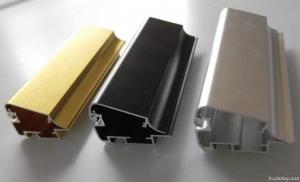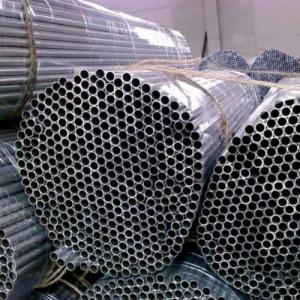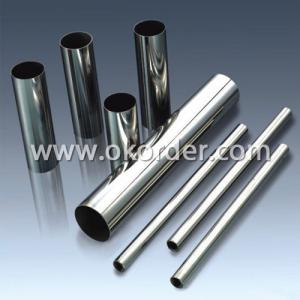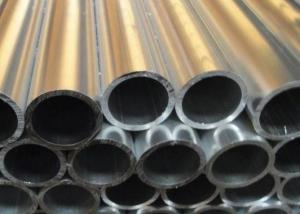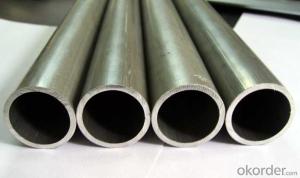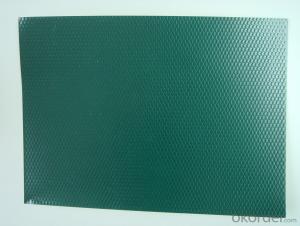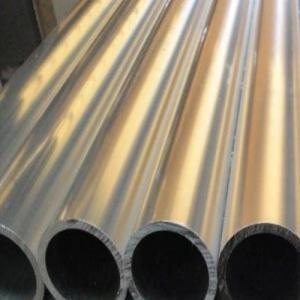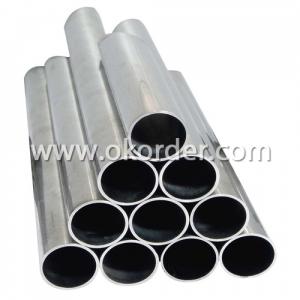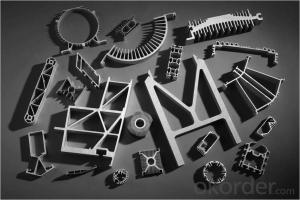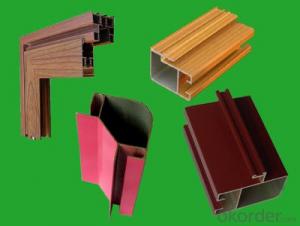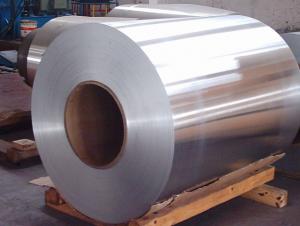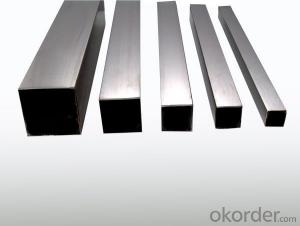Aluminium Profile- AA6063
- Loading Port:
- China Main Port
- Payment Terms:
- TT OR LC
- Min Order Qty:
- -
- Supply Capability:
- -
OKorder Service Pledge
OKorder Financial Service
You Might Also Like
Product Description:
1 Specifications of Aluminum Profiles 6063-T5
Alloy Number | 6063 6061 6060 and different aluminium alloy |
Temper | T4 T5 T6 or other special status |
Surface available | Mill finish, Anodized, Powder Coating, Wooden transfering, electrophoresis, heat insulation, PVDF, and deep processing |
Thickness: | >0.8mm |
Width: | <300mm |
Standard | GB5237.1-2008 |
Special Specification is available on customer’s requirement
2 Usage/Applications of Aluminum Profiles 6063-T5
Aluminium Profiles are widely used in construction(windows & doors,curtain wall), decoration ( flooring and tiling, kitchen) and industry ( heat sink ).
CNBM produces aluminum profiles which meets the national standard GB5237.1-2008. Our strong quality control term bring you the most-qualified products. And with state-of-the-art equipment, and the state owned company background, we have to say, you will understand why there are so many company choose CNBM to be their supplier.
- Q:What's the difference between 6061 tubes and 6063?
- If a certain amount of manganese and chromium, can neutralize the bad effect of iron; sometimes add a small amount of copper or zinc, to improve the strength of the alloy, and the corrosion resistance decreased significantly; there is a small amount of copper conductive materials, titanium and iron in order to offset the adverse effects on the conductivity of the zirconium; or titanium recrystallization grain refinement and control;
- Q:Shenzhen Jin Rongfa metal materials Co., Ltd., specializing in processing aluminum tubes, aluminum bars, aluminum plate, aluminum processing, oxidation, a variety of anodic oxidation. Sand blast oxidation. Hard anodized, colors, black, blue, red, tyrant gold, rose goldLathe kits and laser marking processing are also provided!
- 1., a wide range of applications: laser marking machine can be marked on almost all materials. 2., marking efficiency is high: laser marking machine is controlled by the computer, the laser beam can move at high speed, the marking process can be completed in a few seconds, online marking can be achieved. 3., marking precision is high: laser can form very thin beam, in the material surface of the most fine wire width of up to microns, can print all kinds of graphics, trademarks, bar codes, two dimensional code. Laser marking can also improve the appearance, image and brand effect of products, and enhance the market competition ability of products. 4., the use of low cost: laser marking is non-contact marking, not subject to the usual mold marking fatigue service life limit. Maintenance costs are very low in batch processing.
- Q:Can aluminum pipes be threaded?
- Aluminum pipes, indeed, have the capability to be threaded. Due to its versatility, aluminum proves to be a material that can undergo machining and threading with ease. To accomplish this, the threading process entails carving helical grooves onto the pipe's exterior surface, enabling connection with other pipes or fittings. For accurate and precise threading, the utilization of suitable tools, such as a threading die, becomes imperative. However, it is crucial to acknowledge that aluminum, being a softer metal in comparison to materials like steel, demands caution to prevent excessive force or damage while threading.
- Q:Can aluminum pipes be welded?
- Certainly! Aluminum pipes are capable of being welded. Aluminum is an incredibly weldable substance and can be easily connected using a variety of welding methods such as TIG welding, MIG welding, and even oxy-acetylene welding. Nevertheless, it is worth noting that, due to its unique properties, welding aluminum necessitates specific techniques and considerations. For instance, aluminum possesses greater thermal conductivity and a lower melting point in comparison to other metals, thus necessitating more precise heat control throughout the welding procedure. Furthermore, when exposed to air, aluminum forms an oxide layer that can impede the welding process. Consequently, it is crucial to thoroughly clean and prepare the surface of the aluminum prior to welding, guaranteeing a sturdy and reliable weld joint.
- Q:How do aluminum pipes perform in extreme temperatures?
- Aluminum pipes exhibit exceptional performance under extreme temperatures, renowned for their excellent capabilities. They possess a remarkable melting point of approximately 660 degrees Celsius, rendering them highly resistant to heat. This quality endows them with the ability to endure elevated temperatures without experiencing deformation or structural impairment. Furthermore, aluminum boasts a low coefficient of thermal expansion, ensuring minimal expansion or contraction when subjected to drastic temperature fluctuations. This characteristic enables the aluminum pipes to maintain their original shape and structural integrity, regardless of hot or cold conditions. Additionally, due to its proficient heat conductivity, aluminum proficiently dissipates and transfers heat, effectively averting pipe overheating. Consequently, aluminum pipes are exceedingly dependable and exhibit exceptional performance in environments characterized by extreme temperatures.
- Q:Are aluminum pipes suitable for industrial applications?
- Yes, aluminum pipes are suitable for industrial applications. Aluminum pipes offer several advantages that make them an excellent choice for various industrial settings. Firstly, aluminum is lightweight, which makes it easy to handle and transport. This makes installation and maintenance more convenient. Additionally, aluminum pipes have excellent corrosion resistance, making them suitable for applications where exposure to moisture or chemicals is a concern. Furthermore, aluminum pipes have good thermal conductivity, meaning they can efficiently transfer heat, making them suitable for applications that require temperature control. Lastly, aluminum pipes are highly durable and have a long lifespan, reducing the need for frequent replacements. Overall, the unique properties of aluminum pipes make them a reliable and cost-effective option for industrial applications.
- Q:Can aluminum pipes be anodized for improved corrosion resistance?
- Aluminum pipes can indeed undergo anodization to improve their resistance to corrosion. Anodization is a process that employs electricity to generate a protective oxide layer on the surface of the aluminum. This layer possesses exceptional resistance against corrosion, thereby greatly enhancing the longevity and strength of the pipes. Moreover, anodization offers supplementary advantages, including increased hardness, improved adhesion for paints and coatings, and an enhanced aesthetic appearance. By dyeing the anodized layer in various colors, one can achieve the desired visual effect. The process entails immersing the aluminum pipes in an electrolyte solution and passing an electric current through it, thereby inducing the formation of the oxide layer. All in all, anodization serves as an effective and widely employed technique for augmenting the corrosion resistance of aluminum pipes.
- Q:Which is the high price of 6063 and 6061 aluminium tubes?
- The same material profiles, the average length of the same unit, the weight of the high price.
- Q:What is the difference between the aluminum tube connection and the copper tube connection of the air conditioner?
- The air conditioning copper tube is a kind of pressed and drawn seamless pipe. The air conditioner copper tube has the advantages of light weight, good heat conductivity and low temperature intensity. Copper tubes are often used as connecting pipes for air conditioners. Air conditioning aluminum tube is also a kind of non-ferrous metal pipe. The air conditioning aluminum tube is made of pure aluminium or aluminum alloy and is extruded into a hollow metal tube with longitudinal length. Air conditioning aluminum tube has "annealing, quenching and hot state, medium plasticity, good weldability, weldability" and so on. Aluminium tubes are also used for air conditioning. But for the moment, copper tubes are more suitable for air conditioning than aluminum tubes.The difference between air conditioning copper tube and aluminum tube:1 、 the material of copper tube and aluminum pipe is different.2, the copper pipe and aluminum pipe flow is different.3, copper and aluminum prices are different: Copper costs high.4, the application of copper and aluminum, brass, good ductility, resistance to oxidation, bellbottom do good pressure resistance, not easy leakage of refrigerant, are often used in air conditioning; aluminum can do bell, pressure difference of oxidation resistance, it is prone to leak, if not good insulation cotton, it is a hidden danger.5, copper and aluminum bending: aluminum tube bending, better than copper bending resistance.
- Q:How many kilograms does the copper pipe withstand? How many kilograms does the aluminum pipe withstand?
- The allowable stress for TP2 copper tubes is specified as S=41.2MPa (6000Psi).The allowable stress of aluminum pipe should be checked
1. Manufacturer Overview |
|
|---|---|
| Location | |
| Year Established | |
| Annual Output Value | |
| Main Markets | |
| Company Certifications | |
2. Manufacturer Certificates |
|
|---|---|
| a) Certification Name | |
| Range | |
| Reference | |
| Validity Period | |
3. Manufacturer Capability |
|
|---|---|
| a)Trade Capacity | |
| Nearest Port | |
| Export Percentage | |
| No.of Employees in Trade Department | |
| Language Spoken: | |
| b)Factory Information | |
| Factory Size: | |
| No. of Production Lines | |
| Contract Manufacturing | |
| Product Price Range | |
Send your message to us
Aluminium Profile- AA6063
- Loading Port:
- China Main Port
- Payment Terms:
- TT OR LC
- Min Order Qty:
- -
- Supply Capability:
- -
OKorder Service Pledge
OKorder Financial Service
Similar products
New products
Hot products
